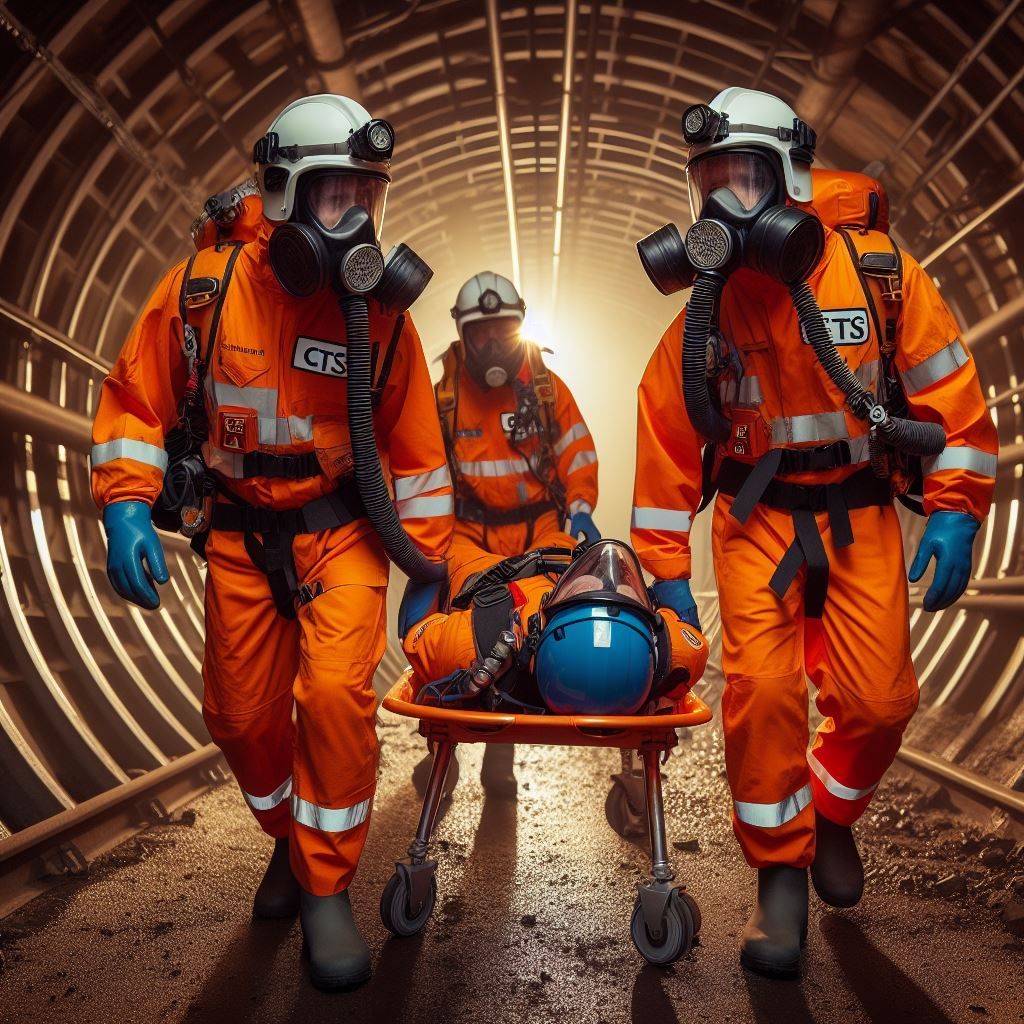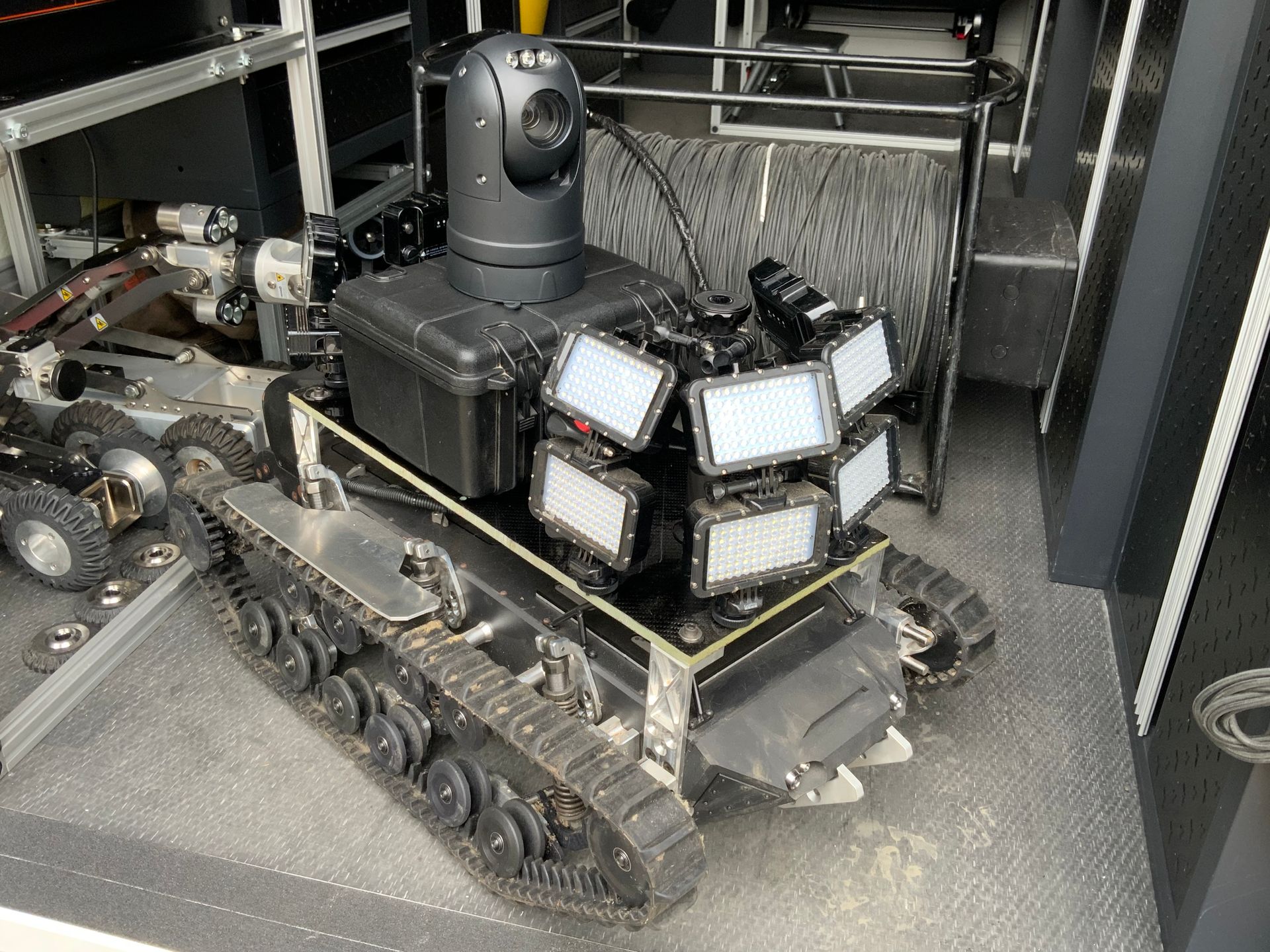Water Ring Main GPR Report
Water Ring Main GPR Report
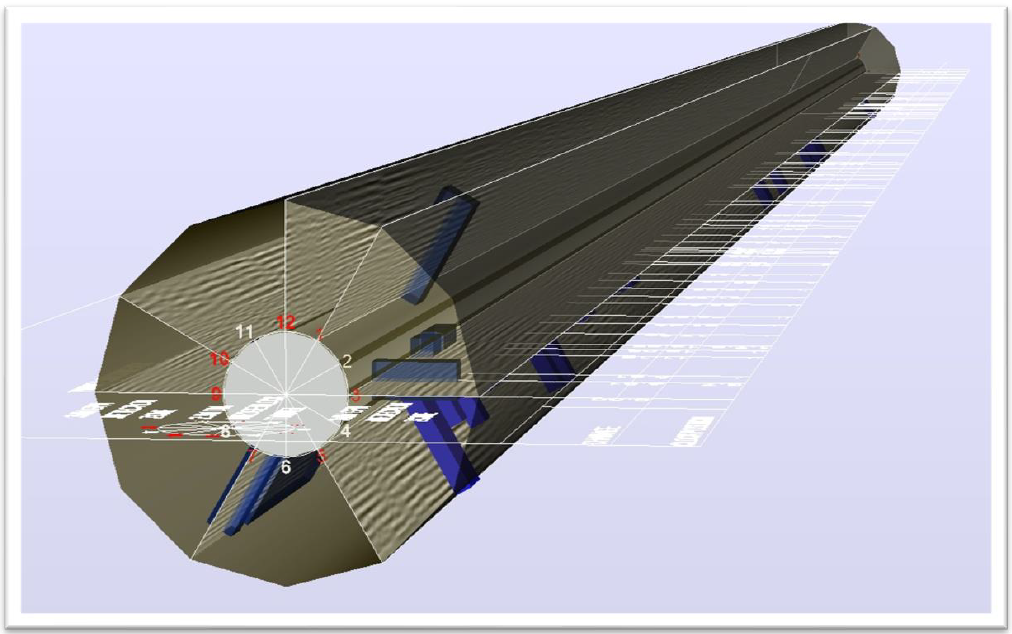
Slide title
Write your caption hereButton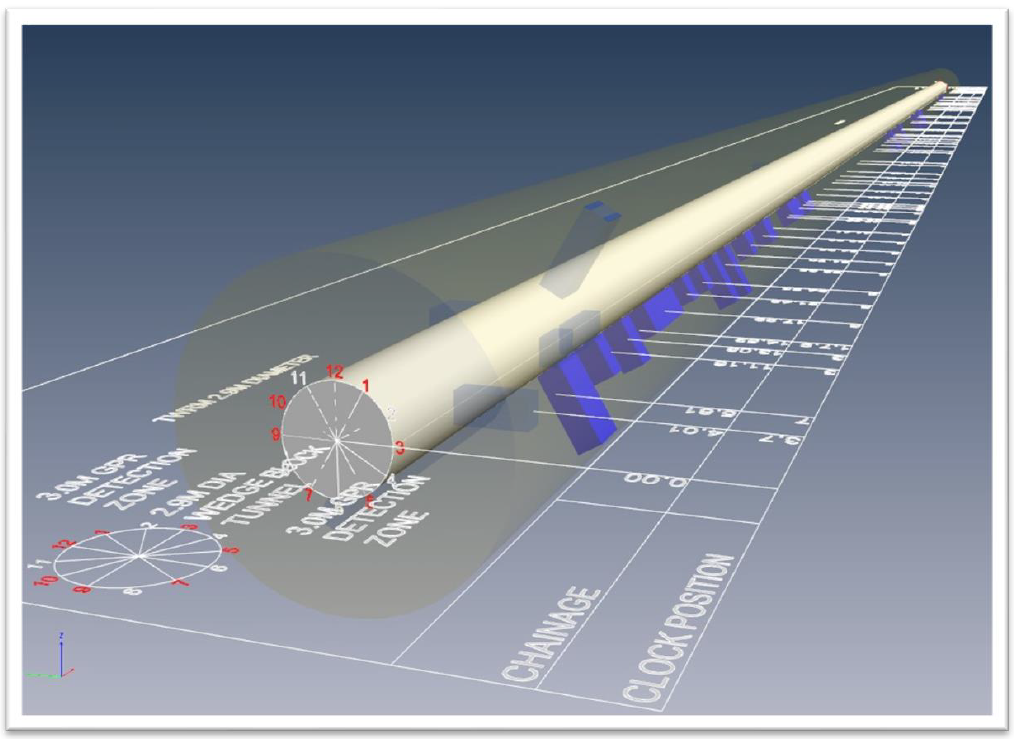
Slide title
Write your caption hereButton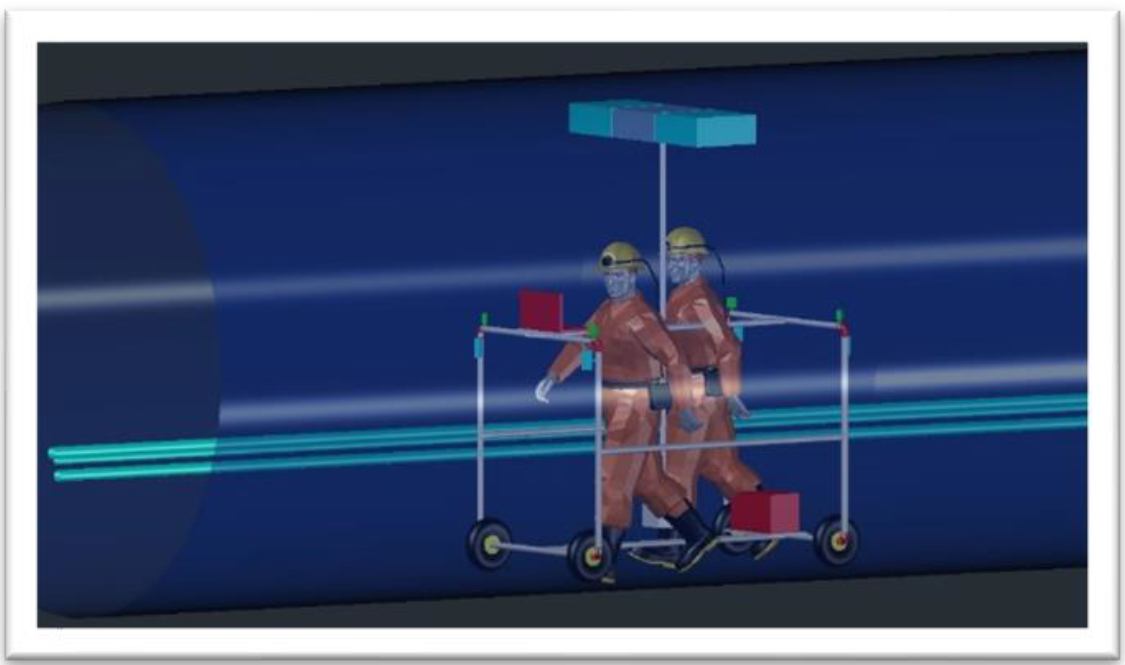
Slide title
Write your caption hereButton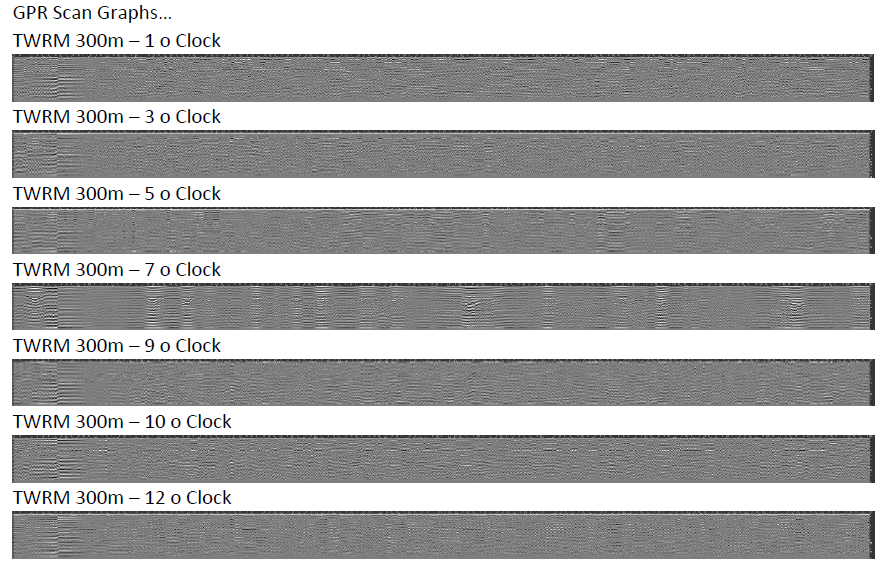
Slide title
Write your caption hereButton
Slide title
Write your caption hereButton
Cable tracing Services Limited appointed by Barhale for Thames water to conduct a trial GPR survey of the Thames water ring main at Kew Gardens over 300meters. The trail using ground penetrating radar was to establish a view of the ground behind the concrete wedge blocks.
The tunnel constructed from 140 mm thick un-bolted concrete wedge blocks to form an internal tunnel
diameter of 2.90 m. The blocks are wedged together by the surrounding soil and thus rely on this external pressure to confine the blocks in place whilst also resisting the internal tunnel water pressures. Thus, removing external pressure (i.e., soil excavation) potentially impacts the TWRM.
The tunnel is approx. fifty meters deep, Access to the tunnel is Via a shaft with numerous landings, CTS had previously surveyed part of the tunnel with Laser scanning techniques.
Equipment…
CTS researched the world industry for GPR and used a touchless GPR system designed for tunnels, the equipment had was imported into the UK, the supplier provided schematics and specifications for the system.
Stage 1, Designing
CTS cad operators built a conceptual 3d Design in AutoCAD on how 360-degree coverage could be established.
using the previous point cloud data, the GPR manufactures specifications and 3d modelling, parts where sourced to build a bespoke trolley to house all the equipment on. The 3d design was critical to ensure all parts and equipment would fit through the hatch opening of the tunnel.
Stage 2. Building the trolley
The next phase at the workshop the trolley build began, steel section pipes and joints formed the box frame of the trolley, wheels where added, the GPR antennas were attached to a main pole that rotated 360 degrees to give the coverage around the tunnel, 4 cameras, lighting, a laptop, batteries, and leads made up the remaining equipment. On completion and testing of the trolley all parts were secured into holdalls and boxes ready for deployment.
The Survey…
November 2022 in dry weather 4 CTS confined space operatives arrived at Kew gardens shaft, after inductions and safety briefs the equipment and parts were transported down to the tunnel entrance, the equipment and parts was then lowered into the tunnel.
Within the tunnel 3 ops built the trolley and attached all the equipment, a4 sheets of paper with 10m increments where put on the tunnel walls, the first walk along the tunnel pushing the trolley was carried out, this formed part of the initial testing to see how the trolley would react, and to encode the meterage wheel attached to the trolley. Whilst this push was conducted the cameras positioned at 45 degrees on each corner of the box frame recorded video over the full distance and on the return journey. The GPR system was then started, using a clock count within the tunnel, the GPR antennas were positioned at 7 different angles and pushed the 300 meters to build up the picture of the ground behind the wedge blocks, as the trolley wads being pushed the GPR scan graphs were viewed on the laptop to ensure data was being recorded. On completion of the trial all equipment was removed from the tunnel and shaft, a final check was made to ensure nothing was left in the tunnel and shaft, all operatives now left the confined space.
The data and analysis…
Once the trial was completed the data and analysis of the GPR scan graphs was carried out at CTS offices, using the GPR manufactures software the scan graphs where imported, cleaned up and then exported, a 3d model of the tunnel was built along with a clock, the GPR scan graphs where aligned in 3d to the path taken in the tunnel, Chainage was added to the model, analysis of the graphs was carried out, disturbances or hyperbola with in the scan graphs where identified and a 3d solid block dimension to the antennas field of view where applied to the 3d model over the disturbances and hyperbolas, a picture started to form, its seems that from 9 to 3 o clock the ground is reasonably similar in density, their where very few disturbances in the scan graphs, at 3 to 9 o’clock the opposite, the graphs showed many disturbances and hyperboles, the graphs identify the possibility voids are forming or water behind the tunnel wall is moving the ground to compact it, there also a possibility that gout has washed out and gathered, holding in certain areas
The overall condition of tunnel looks to be in a sound state, their where some cracks on the surveyed parts of the tunnel which have been repaired with grout of concrete.
Conclusion…
The survey results will assist in the next phase of the analysis, if possible, core drilling in areas that the scan graphs show disturbances and hyperbolas will help to corroborate the GPR graphs, to ensure a soil sample comparative various core would need to be taken at intervals where there are also no disturbances or hyperbolas in the scan graphs.
Recommendations.
This has been a challenging and informative trail; much has been learned.
The trolley build worked well, with more time a better safer and more stable trolley can be built, other attachments can be added, the manufacturers equipment worked well, and I am satisfied that the results where of a high standard, more antennas could be added to prevent multiple passes although weight need to be considered. Longer distances can be surveyed.
The equipment is high value, CTS are resolute in working with Barhale and Thames water to survey the ring main with this system and repeat surveys will give overall analysis of the ground with overlap surveys.

© Copyright CTS Ltd. 2023
